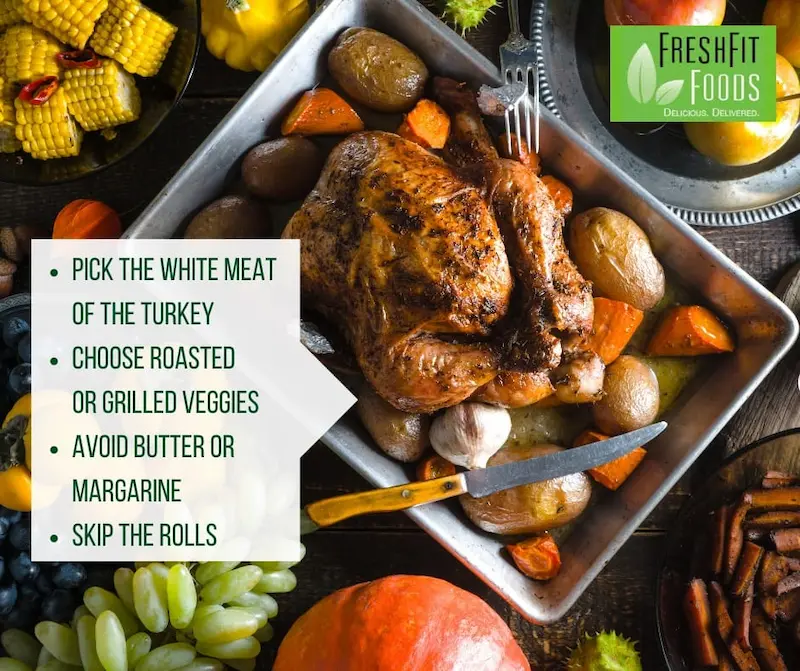Healthy Thanksgiving meals may sound like an oxymoron. After all, many Thanksgiving dinners are quite the feast. Tables are filled with a large turkey, a wide variety of sides and delicious desserts.
It’s tempting to pack your plate and eat a little — or a lot — of everything. This can throw your healthy eating routine into a tailspin. However, with a little planning you can enjoy the holiday feast without guilt.
Eating healthy is all about eating the right balance of foods. If you eat food that is good for you and treat yourself in moderation, you won’t throw your diet too much off balance. Be choosy and spend calories judiciously on the foods you love.
It is much easier to control what you eat when you prepare it yourself. You can choose what is on the menu and you know the ingredients. Alternatively, when you are someone else’s house, there might not be many healthy options from which to choose.
If you are invited to celebrate with family or friends, offer to bring some healthy dishes or desserts. You may find those are the most popular!
Healthy Thanksgiving meals
The traditional main course at Thanksgiving is turkey, which is a healthy choice depending how it is prepared. For example, choose roasted over deep fried. Grilled or smoked turkey are other good options.
Turkey is rich in protein, niacin, vitamin B6 and the amino acid tryptophan. In addition to these nutrients, it also contains zinc and vitamin B12. These nutrients can help boost your immune system.
Skinless white meat is low on fat and is an excellent source of protein. It also contains less cholesterol than chicken, pork or beef. A 3-ounce serving of skinless, boneless turkey breast contains about 25 grams of protein, 1 gram of fat with zero grams of saturated fat and 125 calories.
Although the main course is a healthy option, you have to watch out for the sides. You may want to try everything but resist the urge to fill your plate. Watch portion size and skip seconds.
Fill your plate with fruits and vegetables and choose veggies that are roasted or grilled over creamy dishes such as green bean casserole. Avoid using butter or margarine on your mashed potatoes and pass by the rolls.
Another way to control what you eat is to use a smaller plate and don’t try to fill every inch. If you don’t have the option of a smaller plate, limit the space you use. For example, if there is a design on the plate, tell yourself you can only fill that portion of the plate or you can use every other part of the plate except the design.
When it comes to dessert, opt for fresh fruits. If you are really craving pie, just eat a small slice and avoid adding whipped cream or any other toppings.
Pumpkin pie is a better choice than apple or pecan pie. On average, a slice of pumpkin pie rings in at 316 calories while pecan pie is about 500 and apple is 411. One slice of pumpkin pie contains more than the recommended daily value of vitamin A, which benefits eyesight and the immune system. Pumpkin filling also has potassium, vitamin C and iron, which will all boost your mood.
If you are looking for some healthy alternatives, the Food Network has a variety of healthy dessert recipes using pumpkin, including a low-fat pumpkin cheesecake.
There are so many ways to enjoy a healthy Thanksgiving meal. Ultimately, Thanksgiving is about giving thanks for what we have and enjoying time with family and friends. Even if you are planning a more intimate gathering this year, you can enjoy a nice meal and reflect on the positive side of life.
Happy Thanksgiving!

